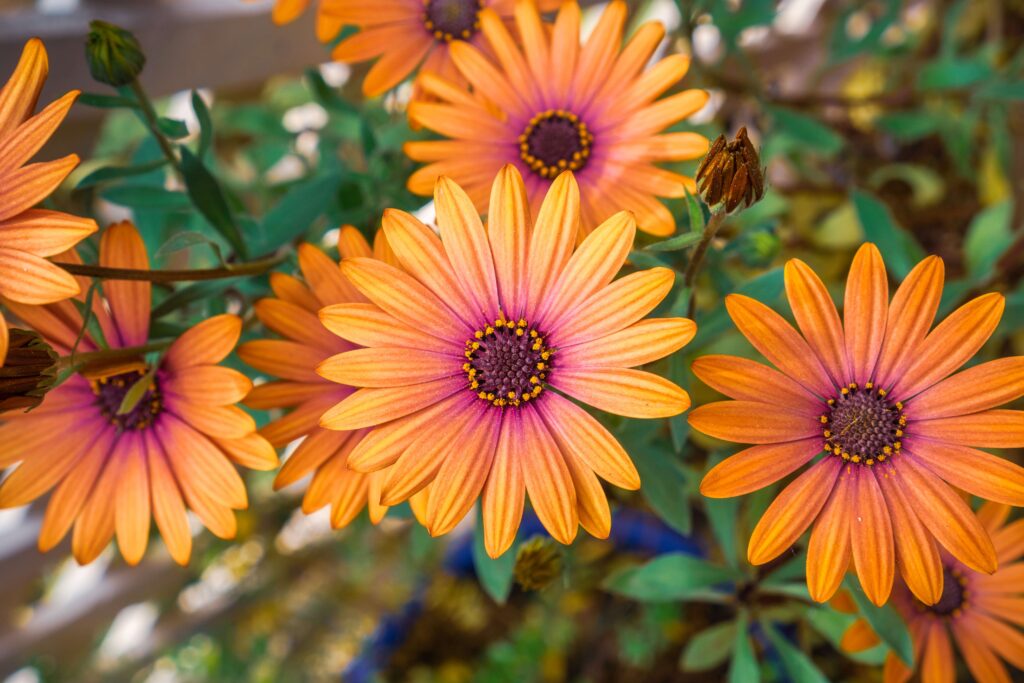What to do in your garden in May

May is a wonderful month in the garden and as the cold winter days approach, gardens in frosty regions revel in brilliant displays of berries and the autumn foliage of deciduous trees and shrubs. In the subtropical regions colour is provided by flaming poinsettias, strelitzia, bougainvillea and red-hot pokers; and in the winter rainfall regions the roses will be bursting into bloom.
If your garden always looks dull at this time of the year, visit your local garden centre to select some late summer and autumn beauties to plant in your garden; these will be well established by next autumn and reward you with their bountiful displays.
Winter flowering annuals
In all regions fast maturing winter flowering annuals like bokbaai vygies (Dorotheanthus), African or Namaqualand daisy (Dimorphotheca), pot marigolds (Calendula), nemesias, cornflowers and Virginian stocks can still be sown directly into garden beds. Remember that as the weather cools down germination of seeds will be slower, and in cold regions it may be prudent to buy established seedlings of slower growing varieties of winter flowers to plant out, so visit your local garden centre to select your winter favourites.
Bulbs
In most regions of the country the soil temperatures have cooled down considerably and you should have finished planting out most of your winter and spring flowering bulbs last month; except for tulips which are planted later in May when the soil temperatures have dropped considerably. Daffodils and hyacinths can still be planted out in May; as well as ranunculus and anemones, which can be planted out every 2 weeks to extend their flowering time.
Liliums will be in stores towards the end of May; plant them out as soon as you can as they do not have a long shelf life, and in cold regions protect the growing tips from frost. The brown stems of established clumps should be cut off at ground level, and overcrowded plants can be lifted and divided this month, but remember that they resent disturbance and can be left undivided for up to 5 years. Nerines are flowering now, so feed and water them regularly. Stop feeding your amayllis bulbs and reduce the amount of water you give them, in order to induce winter dormancy.
Aloes and winter flowering red-hot pokers
Feed and mulch your aloes and winter flowering red-hot pokers (Kniphofia) for a beautiful show in May. Kniphofia ‘Royal Strain’ flowers in winter, producing wonderful dark red to bright orange flowers with yellow bases. Kniphofia ‘Yellow Cheer’ can also be planted out now; it produces its yellow flowers in summer and autumn. Aloes planted in flower borders amongst other plants often receive too much shade and water, making them susceptible to rust, and if the days are still sunny and warm, powdery mildew can develop. Always position them in an open sunny position and avoid overwatering.
Conifers
Continue treating your conifers against attack by the Italian aphid, and give them a light trim if necessary, ensuring that you don’t cut into the old wood.
Cuttings
Continue taking hardwood cuttings of evergreen and deciduous shrubs.
Roses
In the winter rainfall and subtropical regions roses put on a beautiful show in autumn and should still be fed. If black spot is a problem, spray with an organic copper-based fungicide and remove all diseased leaves. In very cold regions you should have stopped fertilising; and your roses will be having their last flush of blooms and start going dormant now, so reduce watering. Deadhead your roses when they stop blooming; and in severely cold regions wrap the stems of your standard roses with a frost protection material or wrap them in straw, bound with twine; also mulch the roots of your plants with straw or any organic material. Tag any roses growing in the wrong position in the garden and which you wish to transplant in June or July.
Watch out for fungal diseases like rust and black spot on your roses, pelargoniums and geraniums. Spray the entire plant; as well as under the leaves with a fungicide.
In certain regions bare root roses, fruit trees, shrubs and trees are available from May to July and can be safely planted out during these months.
Lawn
In the subtropical summer rainfall regions feed your lawn for the last time with a fertiliser which is high in nitrogen. Throughout the country, lawn growth will slow down, and as it does so you will be able to spot the weeds easier, making this an excellent time to weed by hand. In cold regions Kikuyu lawn will go dormant this month, but before putting away your lawn mower for winter give it a thorough clean and take it to a specialist lawnmower shop for a general overhaul and to have the blades sharpened. Ask them to sharpen your secateurs, long handled loppers and hedge clippers as well.
Source: Life is a Garden


Sorry, the comment form is closed at this time.